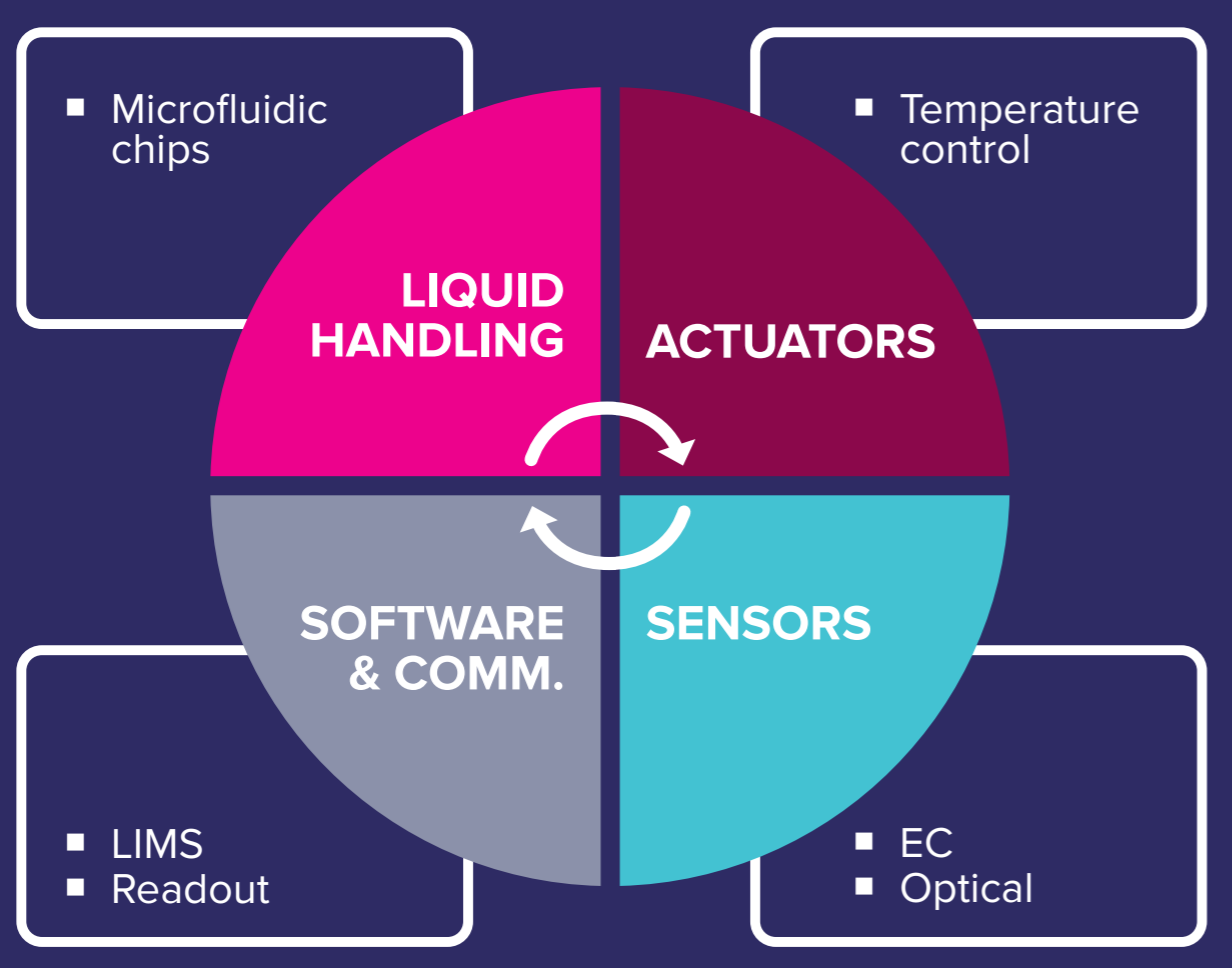The TalTech Lab-on-a-Chip (LoC) team welcomes you
Our Team
- The TalTech Lab-on-a-Chip team consists of biologists, chemists, and electrical engineers. We strive to make droplet microfluidics available to everyone.
Projects & publications
Our team applies a synergy of biological and technological expertise to droplet and other microfluidic technologies. You can see the full list of our projects and corresponding publications by clicking here.
 More
MoreOur educational activities
• We teach courses, host seminars, invite guest lecturers, and propose thesis topics related to Lab-on-a-Chip research. To stay informed, please follow us on Facebook
Open-source
We strongly believe that the way forward in research is open: hardware and software should not be the entry barrier to doing research. Therefore, we openly offer a variety of solutions to problems common in Lab-on-a-Chip.
Contact us
- Department of Chemistry and Biotechnology
Akadeemia tee 15, 12618 Tallinn, Estonia
- Thomas Johann Seebeck Department of Electronics
Ehitajate tee 5, 19086 Tallinn, Estonia
 More
MoreLab-on-a-Chip (LoC) technology focuses on implementing laboratory functions in a single integrated fluidic circuit of a few square millimeters or centimeters. LoC systems utilize microfluidics for automated liquid handling, and typically work with low fluid volumes down to nanoliters or even picoliters. The typically quoted advantages of LoC technology in comparison with pre-existing laboratory instrumentation are 1) lower fluid volumes and thus lower reagent costs, 2) faster analyses, 3) compactness, 4) lower fabrication costs. In the context of in vitro diagnostics (IVD), LoC introduced a new paradigm: complex rapid diagnostic tests that can be administered at home and whose performance metrics are on par with clinical diagnostics. LoC devices developed from and are typically considered a subset of MEMS (micro-electro-mechanical systems), and due to the level of integration, commonly rely on integrated microelectronic sensors and actuators.

At Thomas Johann Seebeck Department of Electronics, the Lab-on-a-Chip workgroup focuses on the research and development of electronic sensors and actuators for Lab-on-a-Chip devices. In the field of LoC biosensors, we build on the Department's extensive history with impedance-based sensors, going back to the 1980s. Research focuses on impedimetric and capacitive biosensors, including measurement methodology and signal processing as well as the development of related hardware and software prototypes. LoC sensor development primarily focuses on the detection of protein biomarkers, but cell counting as well as DNA detection are also part of the research portfolio. On the actuator side, work focuses on integrated electronic temperature regulation and sample preparation.
